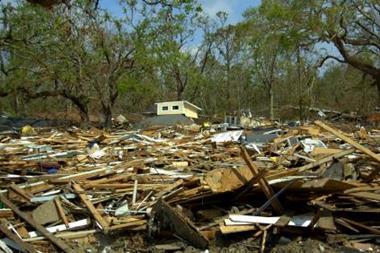With the ash cloud debacle affecting as far afield as Kenya, the results of the lack of insurance cover in poorer countries are starkly illustrated
When i was stranded in Nairobi during one of the periods of volcanic ash disruption, I saw things from a different perspective. About 60% of Kenya’s exports are perishables – soft fruit, vegetables and flowers – that rely on swift and efficient transport by air to world markets. Every day of suspended flights was therefore a disaster with thousands of farm workers temporarily laid off. If the cloud returns it will be an economic disaster – and one that is not insured.
Governments usually end up with the bill for these kinds of economic disasters and, as usual, it is the poorer countries that suffer the most.
But if the governments of these nations could work together with reinsurers, then economic disaster could be mitigated or at least greatly reduced.
I am not suggesting that reinsurers are – or should be – in the charity business, but the purpose of insurance and reinsurance is the spreading of risk, and reinsurers are continually looking to balance their books against the peak zones of the USA, Europe and Japan (soon to be joined by China).
So, if governments can work with reinsurers to provide simple products to protect householders against the relevant peril, such as earthquake, hurricane/typhoon or flood, then this would be progress.
For example, in Brazil, where flood coverage is typically not offered, a simple subsidised product could give relief to a large percentage of the growing lower-middle and middle classes, at the same time removing substantial liability from the government.
I am not generally in favour of government intervention in commercial products such as insurance but, as governments have major liabilities, they have a role to play and are therefore worthy partners, particularly for catastrophe coverage for first and third parties.
Partnerships between commercial companies and governments can take place in a variety of ways, for example, subsidising original premiums for catastrophe perils; co-insuring or co-reinsuring with private companies; acting as a stop loss or catastrophe excess-of-loss reinsurer at far more competitive terms than the commercial markets are able to, because of the lack of capital requirements; and so on.
Micro-insurance is growing in a number of poorer countries; catastrophe coverage is a simple product that could be added to the list. Yes, there would be problems with loss adjusting, but if the claims were only payable on major events defined by economic loss, then I am sure that a simple policy could provide total pay-outs without loss adjusters.
This would allow the product to be kept very competitive, with around 80% of premiums going to claims payments and protection rather than the traditional, say, 50%.
I brought back some roses from Kenya that cost me 4p a stem – and would have cost me 8p a stem the week before. They retail at £2-plus in London.Good value for me, but very sad for Kenya.
Just like reinsurance and all other businesses, prices are driven by supply and demand, with fortunes made, and lost, in the process. IT




































No comments yet